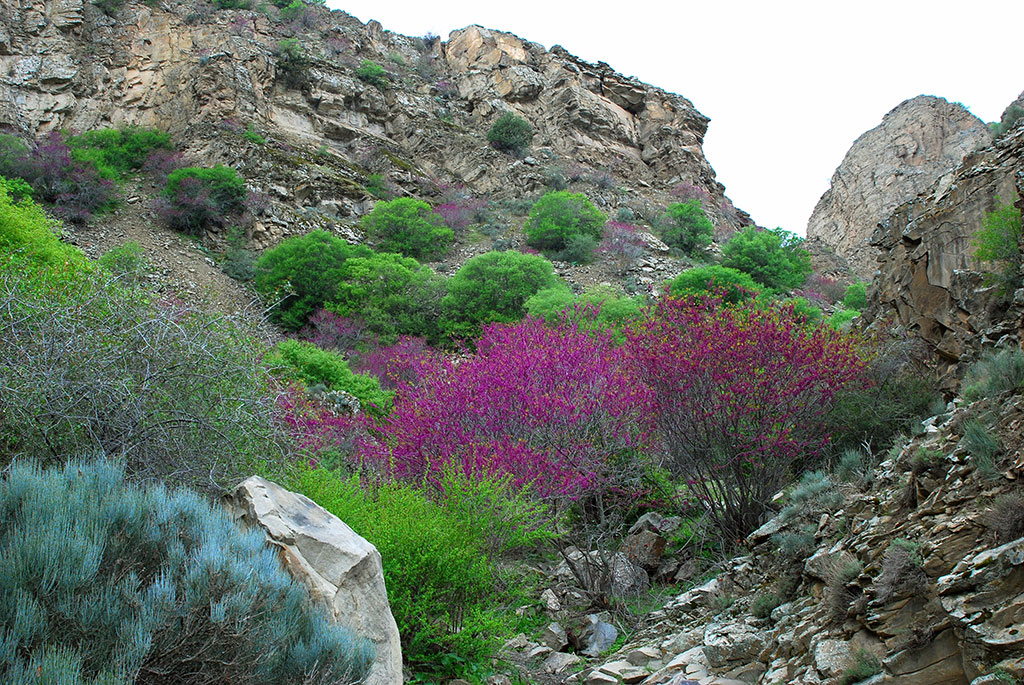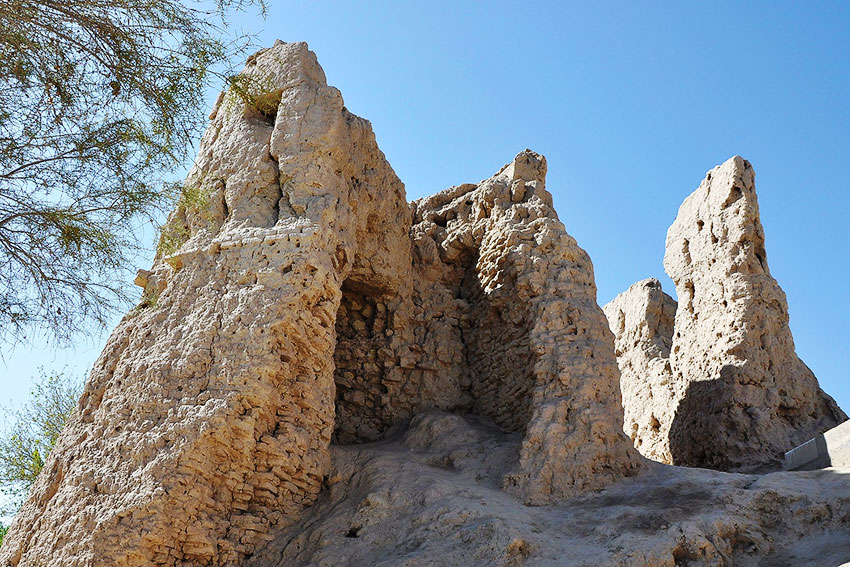In the second Sunday of August, our country celebrate the Turkmen Melon Day - really the national holiday, which is an original tribute to the mastery of our melon growers, who by centuries-old selection were able to cultivate the sorts, differing by unique taste and aroma. “The queen of gourds” always was a subject of special pride and a part of culture of the Turkmen people.
Slices of a sugary melon - the invariable dessert of national cuisine not only in summer, when it is saturated with hot beams of the Turkmen sun, but also in winter, when being stored in a dark cool premise, gets especial taste. We have so got used to presence on our table of a melon delicacy that this tasty food became culinary tradition of our country, which has deep roots. Numerous historical sources of the Middle Ages and notes of travelers of XVIII-XIX centuries testify that the Turkmen melon long since was an important product of local markets and exported in large quantities to countries of the East.

The Arabian traveler Ibn Battuta, who has visited in the Middle Ages the Koneurgench, has been admired by local melons. In his notes, it is possible to read that “… neither in eastern, nor in western parts of the Muslim world there are no such melons. Its peel is green, pulp is red, very sweet and firm at that. It is cut on slices, dry on the sun, packed up in baskets and carry to distant cities of India and China. Among all dried fruit there is no better it”. During stay in the Indian city – Delhi, having heard news about arrival of merchants from Koneurgench, Ibn Battuta sent to them somebody to buy a dried melon. The governor of India, knowing about liking of the traveler for these fruits, did not miss possibility to send to him the melons delivered here by traders.
Ibn Battuta also was not indifferent to taste qualities of local watermelons. He remembered: “February, and in the street, they trade to their utmost with watermelons. Miracles! And, only having stuck teeth, you will feel unusual taste: watermelons are salted, dried up on the sun and sent to India and China, where they are considered to be refined dish”.

O. Donovan, who has visited Merv in 1881, wrote: “Melon and watermelon make a considerable part of ration of local people. The Merv melons, differing by excellent aroma and taste, were also used for sale and exchange for other products”. Studying the life, customs and traditions of the Turkmen of XIX century, M. D. Yenchevich wrote that some owners managed to put on their melons special adhesion signs - tamga.
The population of Merv cultivated various sorts of melons: fragrant, fast-ripening (zamcha, chal-mesek), extremely sweet, mid-season (waharman, ak-hytay, geok-torly), pulpy, late-ripening (payandaki, garry-gyz). By centuries-old selection, the farmers grew up resistant sorts of gourds with special qualities. For example, sakar sort of melon (red gulabi), dry sorts of melons.
Specialists note that presently, it was registered over 1600 sorts of melons, from which 400 - Turkmen. Long-term experience has taught the national selectors to grow up melons and watermelons on sand. “Melons and watermelons, - informs Alihanov-Avarski, - are planted on enormous quantity of the land as they grow excellently even on sand; they make the population’s food almost two thirds of year”.

P. Gladyshev, who passed at the end of XIX century through Garagum, informed about deserted agriculture of Turkmen cattle-breeders. He wrote that Turkmen people conduct small oasis farming. For watering of gourds, it was used the preserved mud or well water.
Inhabitants of the Central Garagum sowed gourds between depressions among ridges of sands, in places close to the clay soil. Sowing was realized by chishlemek method: firstly, by means of shovel or stick, it was made shallow hole in soil, then placed seeds in it. They constructed a fencing from selin to protect seeds from rodents, and sprouts - from sand.
In the past, the nomads-cattle-breeders of the Central Garagum knew the unusual way of cultivation of gourds by grafting of plants on a root of camel's-thorn called sapmak. For this purpose, it was made a cut in a plant root, where a seed watermelon or melon was inserted. A spout received a moisture and feeding from a thorn root. Good harvest turned out. The similar way of cultivation of gourds is practiced in the Central Garagum even today.

Use of seeds of melon for sheep cheese manufacturing is interesting. Cattle-breeders put the hardened colostrum in a small jug, filled in it a few salt, a handful seeds of melon and filled in with sour milk. Melon seeds put in ferment in order that while milk turning, it was remained less liquid in it.
There are a lot of customs and rites connected with gourds. For example, connected with an accrete melon, which was called “Hydyr goren gawun”, that is melons accreted on command of Holy Hydyr. If twin melon is found in one’s plantation, then the owner carried it and nine more good melons to someone from prosperous fellow villagers. The person, who has received it, according to custom, should answer also with any gift, more often a one-year-old lamb. Then, it was prepared an entertainment in honor the Baba-dayhan - the patron of fertility. A twin melon suspended in the house in a prominent place.
On the threshold of Turkmen Melon Day, it is held all over the country the competitions among melon growers for the largest and sweet fruit. And in order to estimate all variety of taste of Turkmen melon, really it is necessary to visit the holiday devoted to it, bright and rather sweet.
Slices of a sugary melon - the invariable dessert of national cuisine not only in summer, when it is saturated with hot beams of the Turkmen sun, but also in winter, when being stored in a dark cool premise, gets especial taste. We have so got used to presence on our table of a melon delicacy that this tasty food became culinary tradition of our country, which has deep roots. Numerous historical sources of the Middle Ages and notes of travelers of XVIII-XIX centuries testify that the Turkmen melon long since was an important product of local markets and exported in large quantities to countries of the East.

The Arabian traveler Ibn Battuta, who has visited in the Middle Ages the Koneurgench, has been admired by local melons. In his notes, it is possible to read that “… neither in eastern, nor in western parts of the Muslim world there are no such melons. Its peel is green, pulp is red, very sweet and firm at that. It is cut on slices, dry on the sun, packed up in baskets and carry to distant cities of India and China. Among all dried fruit there is no better it”. During stay in the Indian city – Delhi, having heard news about arrival of merchants from Koneurgench, Ibn Battuta sent to them somebody to buy a dried melon. The governor of India, knowing about liking of the traveler for these fruits, did not miss possibility to send to him the melons delivered here by traders.
Ibn Battuta also was not indifferent to taste qualities of local watermelons. He remembered: “February, and in the street, they trade to their utmost with watermelons. Miracles! And, only having stuck teeth, you will feel unusual taste: watermelons are salted, dried up on the sun and sent to India and China, where they are considered to be refined dish”.

O. Donovan, who has visited Merv in 1881, wrote: “Melon and watermelon make a considerable part of ration of local people. The Merv melons, differing by excellent aroma and taste, were also used for sale and exchange for other products”. Studying the life, customs and traditions of the Turkmen of XIX century, M. D. Yenchevich wrote that some owners managed to put on their melons special adhesion signs - tamga.
The population of Merv cultivated various sorts of melons: fragrant, fast-ripening (zamcha, chal-mesek), extremely sweet, mid-season (waharman, ak-hytay, geok-torly), pulpy, late-ripening (payandaki, garry-gyz). By centuries-old selection, the farmers grew up resistant sorts of gourds with special qualities. For example, sakar sort of melon (red gulabi), dry sorts of melons.
Specialists note that presently, it was registered over 1600 sorts of melons, from which 400 - Turkmen. Long-term experience has taught the national selectors to grow up melons and watermelons on sand. “Melons and watermelons, - informs Alihanov-Avarski, - are planted on enormous quantity of the land as they grow excellently even on sand; they make the population’s food almost two thirds of year”.

P. Gladyshev, who passed at the end of XIX century through Garagum, informed about deserted agriculture of Turkmen cattle-breeders. He wrote that Turkmen people conduct small oasis farming. For watering of gourds, it was used the preserved mud or well water.
Inhabitants of the Central Garagum sowed gourds between depressions among ridges of sands, in places close to the clay soil. Sowing was realized by chishlemek method: firstly, by means of shovel or stick, it was made shallow hole in soil, then placed seeds in it. They constructed a fencing from selin to protect seeds from rodents, and sprouts - from sand.
In the past, the nomads-cattle-breeders of the Central Garagum knew the unusual way of cultivation of gourds by grafting of plants on a root of camel's-thorn called sapmak. For this purpose, it was made a cut in a plant root, where a seed watermelon or melon was inserted. A spout received a moisture and feeding from a thorn root. Good harvest turned out. The similar way of cultivation of gourds is practiced in the Central Garagum even today.

Use of seeds of melon for sheep cheese manufacturing is interesting. Cattle-breeders put the hardened colostrum in a small jug, filled in it a few salt, a handful seeds of melon and filled in with sour milk. Melon seeds put in ferment in order that while milk turning, it was remained less liquid in it.
There are a lot of customs and rites connected with gourds. For example, connected with an accrete melon, which was called “Hydyr goren gawun”, that is melons accreted on command of Holy Hydyr. If twin melon is found in one’s plantation, then the owner carried it and nine more good melons to someone from prosperous fellow villagers. The person, who has received it, according to custom, should answer also with any gift, more often a one-year-old lamb. Then, it was prepared an entertainment in honor the Baba-dayhan - the patron of fertility. A twin melon suspended in the house in a prominent place.
On the threshold of Turkmen Melon Day, it is held all over the country the competitions among melon growers for the largest and sweet fruit. And in order to estimate all variety of taste of Turkmen melon, really it is necessary to visit the holiday devoted to it, bright and rather sweet.






